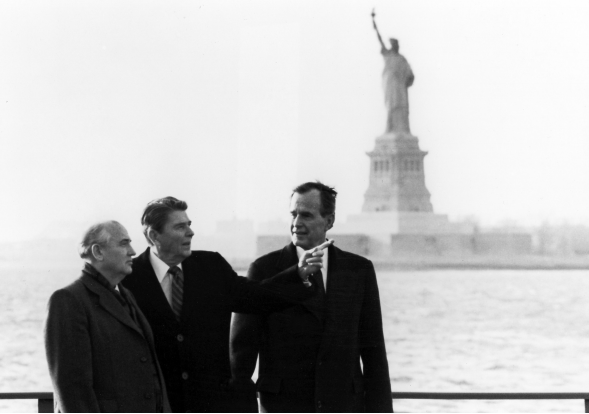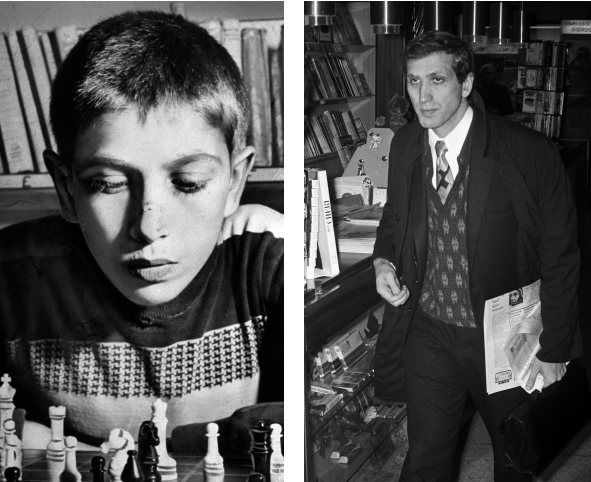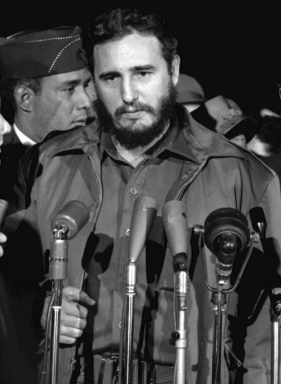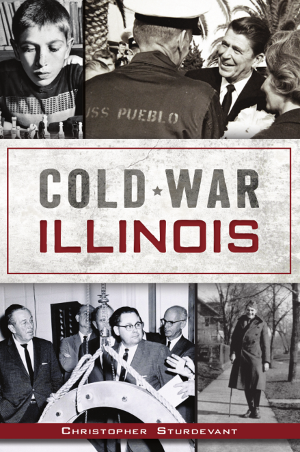
As far back as the end of the nineteenth century, Illinois was witness to the rise in labor organizations dedicated to change in working conditions, wages, and safety. The American labor movement drew inspiration from the Bolshevik takeover of Russia and the creation of the Soviet Union into the 1920s. So much so, that Marxist-Leninist tendencies took over segments of the labor movement in the Land of Lincoln. Throughout the early and mid-twentieth century, Illinois had plenty of social dissidents, anarchists, Bolsheviks, and all manner of communists. That is, until the years following World War II, when the Soviets were recast as the primary enemies of the West. And during the Cold War, Illinois had its own homegrown Cold Warriors.
Communist Party USA
Hoping to bring together various factions of socialists, Charles Ruthenberg became the first leader of the Communist Party USA. After infighting split the socialists in 1919 at the height of the First Red Scare in the United States, Ruthenberg and fellow communists Louis Fraina and John Reed officially founded Communist Party USA on Blue Island Avenue in Chicago. Over the years, Charles Ruthenberg was arrested several times and even did time in Sing Sing Prison. When he died in 1927, thousands packed a memorial at Chicago’s Ashland Auditorium.
“Mr. Gorbachev, open this gate! Mr. Gorbachev, tear down this wall!” — Ronald Reagan on June 12, 1987

Ronald Reagan
Born in Tampico, Illinois, but raised all over the state, Ronald Reagan would grow into one of America’s most famous anti-Communists and Cold Warrior-in-Chief. Reagan set out for Hollywood to break into the movies, but found better work as president of the Screen Actors Guild. From 1947 through 1961, Reagan steered the guild through the Hollywood Blacklist era. As a two-term U.S. president, Ronald Reagan defined the evils of Communism and sought to hasten the fall of the Soviet Union. For decades, the Berlin Wall stood as the most durable symbol of the Cold War. And even though it fell after Reagan’s presidency, the world-changing event was attributed to Reagan’s position toward the Soviet Union.

Bobby Fischer
The unlikely Cold Warrior who won the World Championship in Reykjavik, Iceland in 1972 over Boris Spassky, becoming the first non-Soviet chess champion since 1937, was a Chicago native. He returned to the United States a hero, having finally beaten the Soviets at their own game and dominance for decades in the sport. In a strange twist, Bobby Fischer’s mother, Regina, a United States citizen, had been suspected as a Soviet agent. In 1933, Regina and her then-husband, Gerhardt Fischer fled to Moscow from Germany. With instability in Europe, Regina returned to the United States, but her husband was denied. With the Cold War raging, the FBI would watch Regina carefully for the next twenty-five years.

Chicago Mob Versus Cuban Commies
In later 1950s, on the island of Cuba, Fidel Castro’s guerrilla warfare campaign and propaganda efforts succeeded in eroding the power of Batista’s military and popular support. Ultimately, his revolutionary cause gave him complete authority over Cuba’s new government. But the United States could not allow a country with growing ties to the Soviet Union to flourish forty miles from Florida. And anyone who’s seen The Godfather Part II knows the mob had lucrative investments in Cuban casinos. In one of the wildest Cold War stories, the Kennedy administration and the CIA recruited Sam Giancana and other mobsters to assassinate Fidel Castro. The mob boss Giancana had connections to the CIA, and in 1960, the CIA recruited ex-FBI agent Robert Maheu to meet with the West Coast representative of the Chicago mob, Johnny Roselli. When Maheu contacted Roselli, Maheu hid that he was sent by the CIA, instead portraying himself an advocate for international corporations. He offered $150,000 to have Castro killed, but Roselli refused any pay. Roselli introduced Maheu to two men he called Sam Gold (Giancana) and Joe. “Joe” was Santo Trafficante Jr., the Tampa/Miami syndicate boss and one of the most powerful mobsters in pre-revolution. The mobsters instigated some third-party attempts at assassination, but the Bay of Pigs invasion in April 1961, and the Cuban Missile Crisis the following year shut down further mob hits on Castro.

Cold War Illinois
By Christopher Sturdevant
From Walt Disney and Ronald Reagan to chess matches and Nike missiles, trace the Illinois roots of prominent players in the longest and costliest conflict in American history. Discover a mobster’s involvement in assassination attempts of Cuban leader Fidel Castro and how the nuclear age began at a college football field on Chicago’s south side. Visit the graves of Communist Party leaders and the high-alert heritage of military bases across the state. Local author Christopher Sturdevant, chairman of the Midwest Chapter of the Cold War Museum, follows up his look into Cold War Wisconsin with its neighbor to the south in a fascinating tale of Illinois’s role in the fight between East and West.

